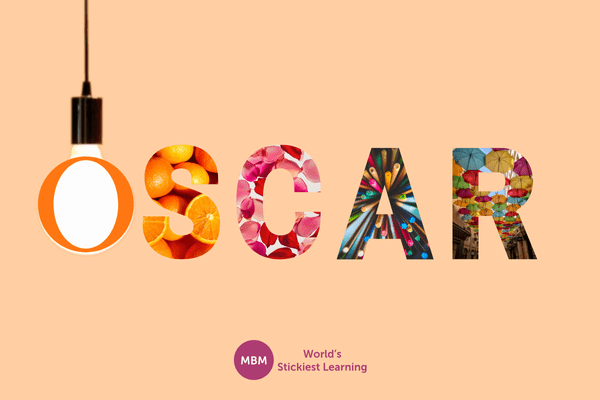Coaching Techniques, Styles, and Skills Leaders Need
In today’s workplace, coaching others in the team is a key responsibility for leaders. It is recognised as a top skill-set that leaders need to be able to perform. Therefore, possessing strong coaching techniques and skills will be valuable resources to have and develop. These techniques and skills can be enhanced through experience and training. They can add great value to the team dynamic. They also contribute to individual strength within the team in terms of performance.
Here we will look at what coaching is about, key techniques to use, 3 coaching styles, and top skills that will help get great results.
What is Coaching?
Coaching is characterised as the effort of one individual to help improve the performance of others in their roles. It also looks at how you can unbridle the potential in others. This is the development of different skills. These skills can be technical and/or soft skills. Coaching helps with overall performance. Coaching also has a direct impact on increasing motivation, improved teamwork, and retention in the workplace. Therefore, having effective coaching techniques will be essential in this development process.
Think about team sports coaches, for example, football, rugby, or basketball. These coaches identify the skills needed in the positions of the team. Then, they develop the different players, enhancing their skills for these roles. They then develop the overall team performance required to win. Finally, they continually develop the skills over a period of time. This keeps the team up to their highest standards to beat the competition. They use effective coaching techniques to fine-tune the entire team.
As a coach, you take on the responsibility of taking individuals to the next level in terms of performance. Then, it’s about looking at combining the overall individual talents to make a stronger performing team. This development process needs to be continuous and reviewed regularly to ensure the best possible performance from the team. Therefore, using the right mix of coaching techniques, skills, and styles will be key to success.
Key Coaching Techniques
In order for coaching to have the proper impact, certain coaching techniques need to be applied. These techniques will allow a structured and effective approach to coaching success.
Individual Needs Analysis
Different people in your team will need different skills and development at various times. We should start by identifying the personal needs of each member of your team. Next, we look at the technical and soft skills requirements for your team members. Then, we use all available resources to properly identify the gaps that exist. Look at ways to best identify these gaps. These can include personal observations, customer feedback, task completion, appraisals, etc.
Once the gaps have been identified, start looking at how best to approach the skill development. Coaches decide if technical or soft skill enhancement is required. They then select the best learning style for developing the skill. Finally, they choose a blended approach where multiple skills are combined.
Sticky Learning ® is 7 times more effective than 1-day training courses. Plus, you will get a Chain of Evidence proving your Return on Investment. Discover soft skills training that changes behaviours long term.

Create Buy-In
Once you identify the development needs, you will need to have the commitment of those involved. Share the benefits of the time and effort that will be invested in order to improve the skills required. Explain how the skills will be developed and the expected outcomes. Also, include possible career steps and additional benefits that come along with the enhancement of these skills. Remember, a collaborative approach will get better results.
In terms of coaching techniques, that commitment from others is essential to create. You need to know that the experience will work as a two-way system. If the process is one-sided, nobody will benefit. For example, if the coach is not interested, the participant will not develop their skills in the right way. Likewise, if the participant is not motivated to take part, the coach is wasting their time. Therefore, make sure the process is working both ways.
Define Clear Goals
All coaching needs to be directed towards an expected end result. We need to set clear goals and objectives for people to work towards. Also, have realistic time frames in place. Look at assignments and projects where people can practice what they are learning and receive assessments on their performance. Ensure the goals are SMART. Review the goals as people develop and adjust accordingly, or write new ones once the first ones have been achieved.
Once goals have been set and agreed upon, a definite timetable and process can be established. You should then regularly check to see that everyone is on track in terms of achieving their goals. If you find anyone is falling behind, you then need to decide if the goals need to be reset. Perhaps, the goals were unrealistic. Or maybe, the goals were not challenging enough based on the existing skills and knowledge of the team member.
Provide Regular Feedback
Coaching includes regular feedback on progress. Address any areas of concern or barriers that have caused problems along the way. Use positive reinforcement when progress has been achieved as per the goals that were set. Use formal and informal settings for sharing feedback regularly.
Feedback sessions should be two-way communication sessions. As well as providing feedback from your side, be ready to hear from the participant about how they feel they are progressing. Ask how they feel about the overall process as well as the skills being developed. Explore how these new or enhanced skills are benefitting them.

Have a Continuous Process
Coaching is not a one-time investment. It is an ongoing cycle that sees the development process revisited and adjusted as needed. Once a particular skill has been developed, return to the start to identify new needs. Continue to create the buy-in required to keep the process going.
These coaching techniques require effort and commitment from the coach. Each takes time and focus. Effective coaches will happily invest in these coaching techniques to develop their team members.
3 Coaching Styles
Now that we have seen the key coaching techniques we need, let’s look at some coaching styles to use. The coaching style you use will depend on the person you are coaching. As with leadership styles, coaching has various options when it comes to the different approaches that you can use. Coaching styles vary depending on the audience. They are also different in terms of current performance and skillset. It is important to be able to move between the styles depending on the learning and development needs of those you are coaching. Many resources will describe 5 coaching styles, while here we will focus on 3 key styles.
Autocratic Coaching Style
With this style, the coach makes all of the decisions in terms of content, process, and end results. The objectives are given by the coach and the team simply follows their lead.
This style is effective with new recruits who have little to no experience. It creates discipline and structure in terms of developing the skills required. Use this to explain practical skills such as the use of machinery or equipment. Demonstrate the task at hand, step by step. Then, have the team repeat it exactly the same way until they have perfected the task. Once the skill has been developed, move on to the next, and so on.
Also, adopt this style for something brand new in the company, irrelevant of team hierarchy. This creates consistency when everyone needs to learn from the beginning.
However, avoid this style with those who have extensive experience and knowledge already. This can demotivate staff who already have a certain level of know-how and need their voice to be heard.
Democratic Coaching Style
Here we see a more inclusive approach. The coach still makes decisions on what and how to do things. However, they consult others and take their opinions on board before deciding. This style is effective for increased buy-in for the learning to happen.

First, sit with the individual or team to discuss the skills that need development. Once there is consensus, agree on the approach that will be taken. Will you use purely practical learning, or will there be a blended-learning approach? Next, decide on goals and time frames. Finally, get the ball rolling with the development experience.
Be careful with using this style when staff are reluctant to admit that development is required. This could lead to negativity and resentment. That is why buy-in is so important. Also, avoid this style when the participants are new. Their knowledge of the subject will limit their input. This can demotivate the participants if their ideas are ignored. This can be due to the points being irrelevant to the development needs.
Holistic Coaching Style
This style of coaching takes the approach of addressing everything that affects the overall result. For example, for increasing revenue in the company, holistic coaches will look at the combined skills necessary to achieve the results. These could include product knowledge, marketing techniques, customer service skills, and technical know-how, among others.
Holistic coaches know that all skills have a knock-on effect on others. As an example, stress in the workplace can actually be caused by physical attributes as well as mental or psychological issues. So, holistic coaches know that everything is interconnected. Therefore, all relevant skills will be addressed, not just one on its own.
Use this style as much as possible, in terms of the go-to style that will get better overall results. It covers more areas that address the development need because of the connectivity between different skills and traits. Also, it creates an emotional connection between the coach and the team, which helps the team develop better.
Top Coaching Skills
In addition to the coaching techniques mentioned above, additional coaching skills will help improve your results. Add these skills to the styles and techniques mentioned. Therefore, it’s a win-win experience for everyone involved.
Ask Open Questions
If we want collaboration during coaching, we should ask the people involved about their development. Use open questions to get the participants talking about their needs and wants. Allow them the chance to address their own ideas for development needs. Encourage self-analysis for their needs to occur using open questions.
Listen to The Participants
Effective coaches listen to the ideas, opinions, and thoughts of the participants involved. Remember, as per the styles mentioned earlier, this would mean the democratic or holistic styles would be in use at this stage. When someone is new to the skill being developed, they may not yet have all the answers. However, they may still have something of importance to share or ask. Be ready to listen and answer any questions they have.
Therefore, prepare for questions, Have answers ready in advance, where possible. Create an environment where questions and suggestions are welcome. Also, avoid criticising the participate for asking too many questions. Introduce questions and answers time into your coaching session, if required, to keep the session time on track.

Use Positive Reinforcement
We all love compliments and praise. In order to engage the participants, recognise and acknowledge progress as it happens. Use positivity to promote success and encourage participation. Remember, we use compliments when they are deserved. Stay away from offering praise for the sake of it. Also, avoid creating any hint of favouritism by piling on the praise to just one person in a group setting.
Empower Participants
Coaches should empower those being coached. Throughout the process, have the participants share their input and ideas. Allow them to make decisions and have accountability for their development. By empowering the participants, you will see:
- Increased motivation.
- Better commitment.
- Improved collaboration.
- Effective communication.
Remember, this might not always be possible. For experienced staff, this works well. For new staff, provide more guidance and support.
Coaching Techniques Summary
Coaching is about the participant, not the coach. All of our focus should be on them. We need to keep their learning styles, level of skills and experience, and willingness to participate. With the use of the above coaching techniques, styles, and skills, you will get much better results. Keep in mind that coaching is for current as well as future roles in your company.
Apply our 3 C’s of Coaching.
Choose
Identify those who need coaching and what areas need development. Prepare the development plan that best suits the individual or team you are coaching. Choose the coaching approach that will best tackle the skills being developed.
Change
Be ready to adapt your style as needed, depending on the person and their needs. Move between the different coaching techniques and skills as needed. As people are developing, change your targets and develop further. As coaching is an ongoing process, change the goals once they have been achieved so new skills are now focused on.
Challenge
Create coaching experiences that challenge the participant. Avoid overstretching the participants in such a way that sets them up to fail. Instead, have coaching opportunities that allow your team to grow and improve.




